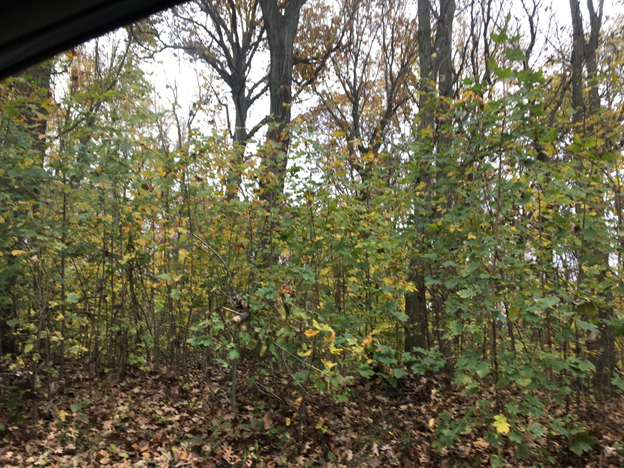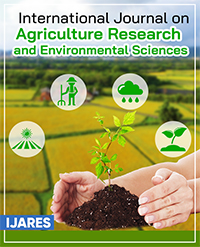Some Observations on Invasive Vascular Plant Species of the Eastern United States, New York to the Florida Keys
Richard Stalter*
Department of Biological Sciences, St. John’s University, USA
*Corresponding author: Richard Stalter, Department of Biological Sciences, St. John’s University, 8000 Utopia Parkway, Jamaica, NY 11439, USA
Article History
Received: December 18, 2020 Accepted: December 28, 2020 Published: December 29, 2020
Citation: Stalter R. Some Observations on Invasive Vascular Plant Species of the Eastern United States, New York to the Florida Keys. Int J. Agri Res Env Sci. 2020;1(1):09‒11. DOI: 10.51626/ijares.2020.01.00003
Abstract
The objective of the present study was to compare the invasive vascular plant species at city, state, National Parks, and research preserves in New York, New Jersey, South Carolina and Florida, where the author has conducted research and published his findings in refereed journals. Sites with human activity have a high percent (<50%) of invasive species. Invasive taxa have increased at “protected” sites where human impact is minimal posing a further threat to native vegetation. The deliberate introduction of exotic taxa such as Callery Pear, Kudzu, Multiflora Rose, Norway Maple, Oriental Bittersweet, and more pose a threat to native taxa.
Keywords: Invasive vascular plant species, New York, New Jersey, South Carolina, Florida, USA
Introduction
The objective of this short paper is the present data on invasive vascular plant species at several city, state, National Parks, and research preserves from New York to the Florida Keys. These sites harbor a wealth of plant communities including salt marsh, brackish marsh, mangrove, coastal dune, ruderal successional fields and woodlands, and mature woodlands. The sites presented in this paper were visited by the author over a number of years providing data for the present paper. The sites included in this study are Orient Beach State Park, New York [1], Liberty Island, NY [2]. Ellis Island, NY [3], Hoffman and Swinburne Island, NY [4], a five year study to sidewalk plots in Brooklyn and Queens NY [5], the High Line, an abandoned rail line in New York City [6], and an 83 year history of vegetation change at Alley Pond Park, a New York City Park, from 1935 to 2018 [7]. Human impact is high on all of the above sites except Hoffman and Swinburne islands at the mouth of the Hudson River bordering northeast Staten Island.
All the aforementioned have a high percent of invasive taxa exceeding 60% with the exception of the flora of the High Line in 2002, 55.8% (Table 1). Stalter et al. [8] conducted a floristic inventory of Rutgers University’s ecological research woodland, Hutchison Memorial Forest comparing his data with that of Bard [9]. Bard [9] found 5 invasive taxa in the forest concluding that this mature forest was a closed community that could resist invasive taxa. Stalter examined herbarium specimens in Rutgers Chrysler Herbarium and documented significant invasive introductions 19, since Bard’s [9] floristic inventory. These new invasive taxa included Acer platanoides, (Norway Maple), Alliaria petiolata (Garlic Mustard), Celtis orbiculatus, (Oriental Bittersweet), Lonicera japonica, (Japanese Honeysuckle), Microstegium vimineum, (Japanese Stilt grass), and Rosa multiflora (Multiflora Rose). Of the above, Acer platanoides (Figure 1) and Microstegium vimineum are particularly injurious to native taxa. Microstegium is the dominant herbaceous plant at the Rutgers forest. It out competes native herbaceous vegetation. Its success is aided and abetted by a burgeoning white tail deer population that selective feeds on native taxa. Acer platanoides may prove to be a future problem as no plants were found under its dense shade. It is the first tree to leaf out in the spring and last to lose its leaves in the fall (Figure 1). The deep shade under its canopy has the potential of preventing oak regeneration at Hutchison Memorial Forest and forest sites in New York City parks where it has become established.

Figure1: Acer platanoides, Cunningham Park, NY, 15 November, 2018. Norway Maple is the last to lose its leaves in the fall and first to leaf out in the spring. No vegetation was observed under its dense canopy at Hutchison Memorial Forest, New Jersey. Norway Maple may also pose a threat to tree regeneration in NYC parks in the future. Photo by J. Tong.
Table 1: Acer platanoides, Cunningham Park, NY, 15 November, 2018. Norway Maple is the last to lose its leaves in the fall and first to leaf out in the spring. No vegetation was observed under its dense canopy at Hutchison Memorial Forest, New Jersey. Norway Maple may also pose a threat to tree regeneration in NYC parks in the future. Photo by J. Tong.

Introduction
The objective of this short paper is the present data on invasive vascular plant species at several city, state, National Parks, and research preserves from New York to the Florida Keys. These sites harbor a wealth of plant communities including salt marsh, brackish marsh, mangrove, coastal dune, ruderal successional fields and woodlands, and mature woodlands. The sites presented in this paper were visited by the author over a number of years providing data for the present paper. The sites included in this study are Orient Beach State Park, New York [1], Liberty Island, NY [2]. Ellis Island, NY [3], Hoffman and Swinburne Island, NY [4], a five year study to sidewalk plots in Brooklyn and Queens NY [5], the High Line, an abandoned rail line in New York City [6], and an 83 year history of vegetation change at Alley Pond Park, a New York City Park, from 1935 to 2018 [7]. Human impact is high on all of the above sites except Hoffman and Swinburne islands at the mouth of the Hudson River bordering northeast Staten Island.
All the aforementioned have a high percent of invasive taxa exceeding 60% with the exception of the flora of the High Line in 2002, 55.8% (Table 1). Stalter et al. [8] conducted a floristic inventory of Rutgers University’s ecological research woodland, Hutchison Memorial Forest comparing his data with that of Bard [9]. Bard [9] found 5 invasive taxa in the forest concluding that this mature forest was a closed community that could resist invasive taxa. Stalter examined herbarium specimens in Rutgers Chrysler Herbarium and documented significant invasive introductions 19, since Bard’s [9] floristic inventory. These new invasive taxa included Acer platanoides, (Norway Maple), Alliaria petiolata (Garlic Mustard), Celtis orbiculatus, (Oriental Bittersweet), Lonicera japonica, (Japanese Honeysuckle), Microstegium vimineum, (Japanese Stilt grass), and Rosa multiflora (Multiflora Rose). Of the above, Acer platanoides (Figure 1) and Microstegium vimineum are particularly injurious to native taxa. Microstegium is the dominant herbaceous plant at the Rutgers forest. It out competes native herbaceous vegetation. Its success is aided and abetted by a burgeoning white tail deer population that selective feeds on native taxa. Acer platanoides may prove to be a future problem as no plants were found under its dense shade. It is the first tree to leaf out in the spring and last to lose its leaves in the fall (Figure 1). The deep shade under its canopy has the potential of preventing oak regeneration at Hutchison Memorial Forest and forest sites in New York City parks where it has become established.
References
- Lamont EE, R Stalter (1991) The vascular flora of Orient Beach State Park, Long Island, New York. Bulletin of the Torrey Botanical Club 118(4): 459-468.
- Stalter R, N Tang (2002) The vascular flora of Statue of Liberty National Monument, New York Harbor. Bartonia 61: 123-130.
- Stalter R, S Scotto (1999) The vascular flora of Ellis Island, New York City, New York. J Torrey Bot Soc 126(4): 367-375.
- Stalter R, A Munir (2002) The vascular flora of Hoffman and Swinburne Islands New York Harbor, New York. J Torrey Bot Soc 129(1): 77-82.
- Stalter R, J Rachlin (2018) The vascular plant species of sidewalk plots in Brooklyn and Queens: New York City’s overlooked “island” flora. J Torrey Bot Soc 145: 263-270.
- Stalter R (2004) The flora on the High Line, New York City, New York, J Torrey Bot Soc 131(4): 387-393.
- Stalter R, J Rachlin (2020a) Eighty-three years of vascular plant change at Alley Pond Park, County, New York, J Torrey Bot Soc (2020 in press).
- Stalter, RDG Howarth, E Franxhi (2020b) The vascular flora of Mettler ‘s Woods, Somerset County, New Jersey. Bios (2020 in press).
- Bard GE (1952) Secondary succession on the piedmont of New Jersey. Ecological Monographs 22(3): 195-215.
- Stalter R, J Rachlin, J Baden (2020c) A forty-seven-year comparison of the vascular flora at three abandoned rice fields, Georgetown, South Carolina. J Bot Res Inst Texas (2020 in press).

